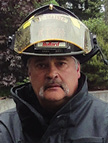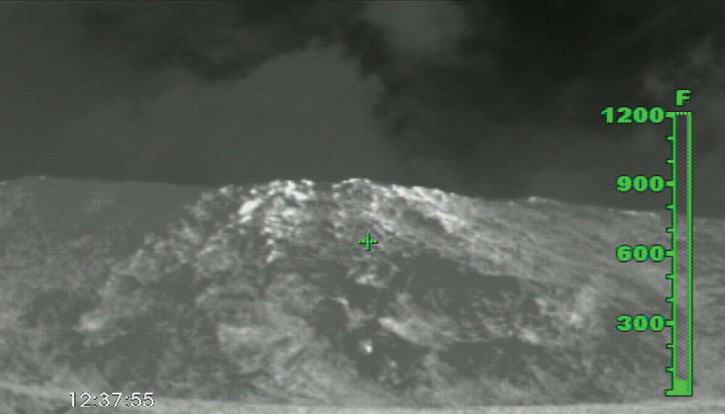
By Manfred Kihn
Industrial and environmental fire emergencies don’t happen often, but when they do, they can certainly present great challenges to the fire service. As industries have changed their methods over the years to run more efficiently and cost-effectively, challenges have grown for the plant fire brigades and the community’s local fire service.

When I say large industries, I mean those industries that you see off in the distance with huge stacks pumping out plumes of white steam. Many of these industries use state-of-the-art powered boilers fueled by wood. Well, it’s not actually wood anymore, as the logs are chipped up into huge piles called “hog fuel,” which can also include bark, sawdust, planer shavings, and wood chunks. Sawmill wood waste and bark are used for this same purpose, and the resulting heat from the boilers generates steam that can drive turbo-generators or dry products.
Related Content
- Thermal Imaging: Setting Up Your In-House Thermal Imaging Training
- Thermal Imaging: Train Where You Can
- Thermal Imaging: Heat Signatures Can Be Masked
What does this have to do with thermal imaging? Nothing really, until one of those HUGE “hog fuel” piles catch on fire, generally caused by spontaneous combustion or mechanical problems from machines being used nearby. These fires can smolder for quite some time before being detected and then the challenge begins for extinguishment. Often, large machinery is brought in to separate the pile of unburned products and to minimize further risks.

1 Here’s a “hog fuel” pile that is still smoldering as it appears when looking through a TI. (Photo courtesy of Bullard.)
How can a thermal imager (TI) help in these industrial fire situations? Early detection before the fire can really set itself deep within the “hog fuel” pile is the first step. The plant or industrial security team can make general observations during their rounds, even from a vehicle, by looking through the open window or door. If a fire does break out, the fire brigade or local fire service can take advantage of using the TI for fire extinguishment methods.
I had an opportunity many years ago to tour a pulp mill, and the head of security had mentioned the “hog fuel” fire they had experienced that burned for a solid week and cost them thousands of dollars in valuable product. When I showed him what was visible through the display screen of a TI and that the fire was still smoldering inside, he was shocked, and the only word that came to his mind was “impossible”—in his opinion, the firefighters had poured water on the “hog fuel” and drowned it, so the fire had to be out!
Industrial Forestry Operations is responsible for the wood cutting of trees, and the remnants are piled up into slash piles and burned off during the wintertime. Before contractors can obtain cutting permits, they have to ensure that their burnt slash piles are 100% extinguished. A TI is a perfect tool for this application, as I know firsthand by doing it through an open window of a Bell 206 jet ranger helicopter scanning 14 slash piles in a day and finding just one pile still smoldering at 300 feet above ground.
This similar scenario can pertain to a landfill site, as anyone who has attended the local “garbage dump” fire knows it can be a very messy situation. These are generally broken down into two types: surface fires and deep-seated fires. A TI deployed during ground or aerial operations can aid the firefighters during extinguishment by showing them where the heat concentration is generated by the fire since it is burning underground. An ounce of prevention can be used by letting the landfill workers use the TI to monitor situations. The best time to monitor the landfill is early in the morning or late in the evening for any potential hot spots that could eventually erupt into a fire.
Another scenario that is difficult to contend with is called a “peat bog fire,” which is a collection of decayed organic matter and vegetation. When it burns, it releases considerable amounts of carbon dioxide and other greenhouse gases into the atmosphere. It can burn deep underground for several feet or meters, even in damp conditions, until its fuel is exhausted. These fires can smolder underground for months and even years, which presents dangers for the local fire or forestry services when attempting to extinguish them.
What the ground conditions are like before walking on the ground can generally be determined by the visible open flame or smoke with the naked eye. With the use of a TI, a better determination can be made of the heat or burn patterns, especially burning underground, and a safe distance zone can be established for crew members or machinery being used.
Whatever industrial or environmental fire challenges you encounter, a TI can be your best friend.
Manfred Kihn is a 19-year veteran of the fire service, having served as an ambulance officer, emergency services specialist, firefighter, captain, and fire chief. He has been a member of Bullard’s Emergency Responder team since 2005 and is the company’s fire training specialist for thermal imaging technology. He is certified through the Law Enforcement Thermographers’ Association (LETA) as a thermal imaging instructor and is a recipient of the Ontario Medal for Firefighters Bravery. If you have questions about thermal imaging, you can e-mail him at manfred_kihn@bullard.com.

